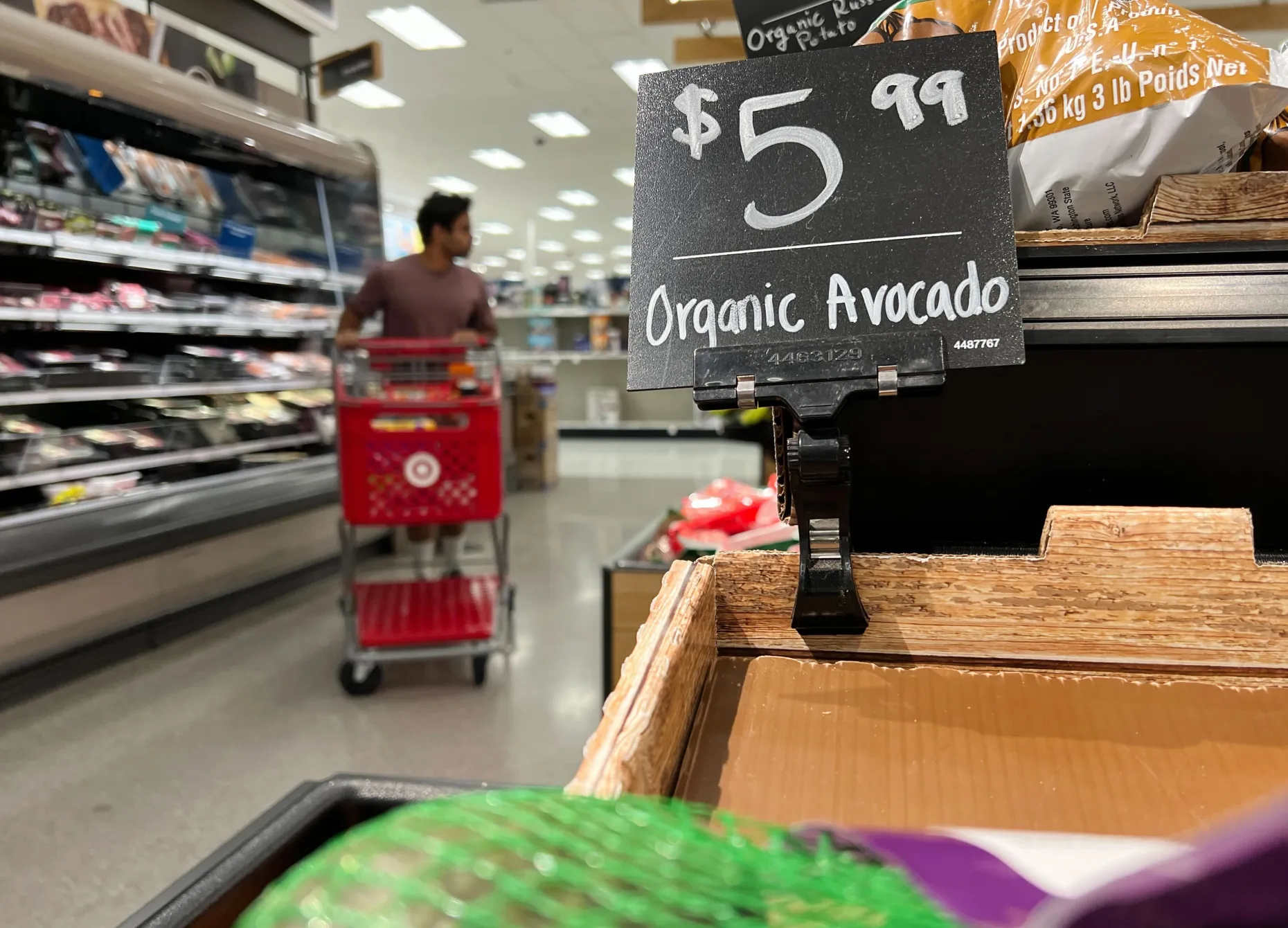Bay Area prices skyrocket by highest rate in nearly four decades

Bay Area inflation skyrocketed in June, fueled by the highest annual increase in consumer prices in nearly four decades, a brutal trend that threatens pocketbooks and paychecks, a grim new report shows. And, according to experts, the worst may be yet to come.
Consumer prices in the Bay Area hopped higher by 6.8% for the month, the fastest year-over-year increase since 1984, the U.S. Bureau of Labor Statistics reported Wednesday. That October, Bay Area inflation jumped at a yearly rate of 7.1%, according to this news organization’s analysis of archival government reports. Nationwide, the inflation rate hit 9.1% this June, the largest yearly increase since 1981, according to the new government survey.
Ominously, prices could rise significantly further before inflation finally eases up, warned Christopher Thornberg, co-founder and economist with Beacon Economics.
“You may see a cumulative 30% increase in prices from where we are now,” Thornberg said.
Recent weeks have brought some positive news — prices for gas and some other goods, like lumber, have started to soften — but “it’s too early to say that this is the peak,” said Mark Vitner, a senior economist with Wells Fargo Bank. “Energy prices have come down. We might see some improvement. But there is a lot more room for prices to rise.”
And even when prices do come down at the wholesale level, shoppers don’t always reap the benefit at stores and the gas pump.
The big factor behind the current inflation surge, Thornberg believes, is that the federal government and the Federal Reserve bank have pumped far too much money into the economy in their quest to combat the economic maladies unleashed by the coronavirus.
“There is still way too much money circulating in the economy,” Thornberg said. “The Federal Reserve created the potential for a huge increase in inflation by printing all of that money.”
Others point to the impact of the war in the Ukraine on the price of oil and grain, and to supply chain issues and worker shortages that still linger from the pandemic.
The eye-popping jump in consumer prices intensifies the pressure on the nation’s Federal Reserve bank — which has been easing up interest rates in recent months — to hike those rates even more dramatically in a last-ditch quest to ward off runaway inflation.
Yet such a move by the Central Bank is certain to force borrowing costs drastically higher for an array of financial products, including mortgages, credit cards, vehicle loans and home equity lines of credit. Already, mortgage rates are about double what they were last summer.
What is certain is that the stunning increases in prices means that people have less buying power and their wages are being eroded.
Over the 12 months that ended in June, several key categories of goods and services bought by consumers have increased greatly.
“It’s a surprise every time we go shopping,” said Paul Smith, who was shopping Wednesday with his wife at Target. “The big cream cheese we used to buy went up from $8 to $12 the last time we checked. It can really pile on.”
According to the Bureau of Labor Statistics, unleaded regular gasoline is up 50.1% in the Bay Area year over year, natural gas piped into the home — the equivalent of a segment of the PG&E bill — is up 33.6%, electricity utility prices — also part of the PG&E bill — are up 19%, food prices are up 10.8%, with cereals and bakery products up 13.6%, and household furnishings and supplies have jumped 9.5%.
Jolted by worsening inflation, San Jose resident Taria Gross is attempting to make ends meet by working overtime shifts in her security guard job, driving for DoorDash and moving to less expensive housing.
On Wednesday, Gross was shopping at a Home Depot in San Jose for boxes to pack up her belongings. But inflation caused some sticker shock even for mundane items such as packing boxes.
“Five dollars? When I came here today I thought these were gonna be 99 cents,” Gross said.
Gross switched to a smaller and cheaper box.
More modest price increases in some essential categories have helped to keep the Bay Area inflation rate — while still painfully high — from being even worse.
The cost of renting a primary residence is up 1.3%, apparel costs have risen just 3% and medical care expenses have risen 5.7%, the government report showed.
“Inflation is like a giant fog bank that settles on the economy,” Thornberg said. “People and businesses won’t invest as much.”
But if people and businesses slash their spending too much, economic activity could erode badly and the nation might topple into a recession, unleashing a wave of job cuts and business shutdowns. A recession might arrive in two or three years, Thornberg warned.
“I am very worried about a recession,” Thornberg said. “It often takes a recession to break an inflationary cycle.”
And an economic downturn might hammer the Bay Area more severely than the rest of the country, partly because this region’s primary economic engine is the tech sector.
Soaring inflation and fast-rising interest rates have shoved the major stock indices into a bear market. The decline in equity prices could make it tougher for tech companies to raise capital from the private sector or to float a successful initial public offering. Plus, the Wall Street meltdown could erode the value of employee stock options.
“Inflation is going to be very painful in the Bay Area,” Vitner said. “We think the Bay Area is going to go into a recession before the rest of the country.”

